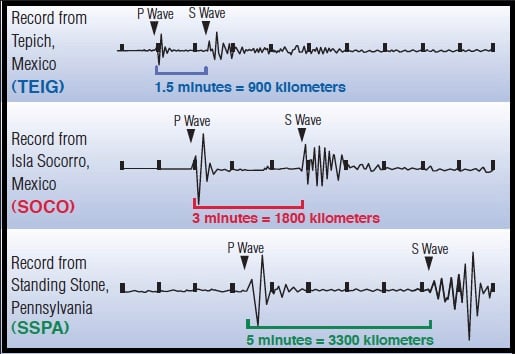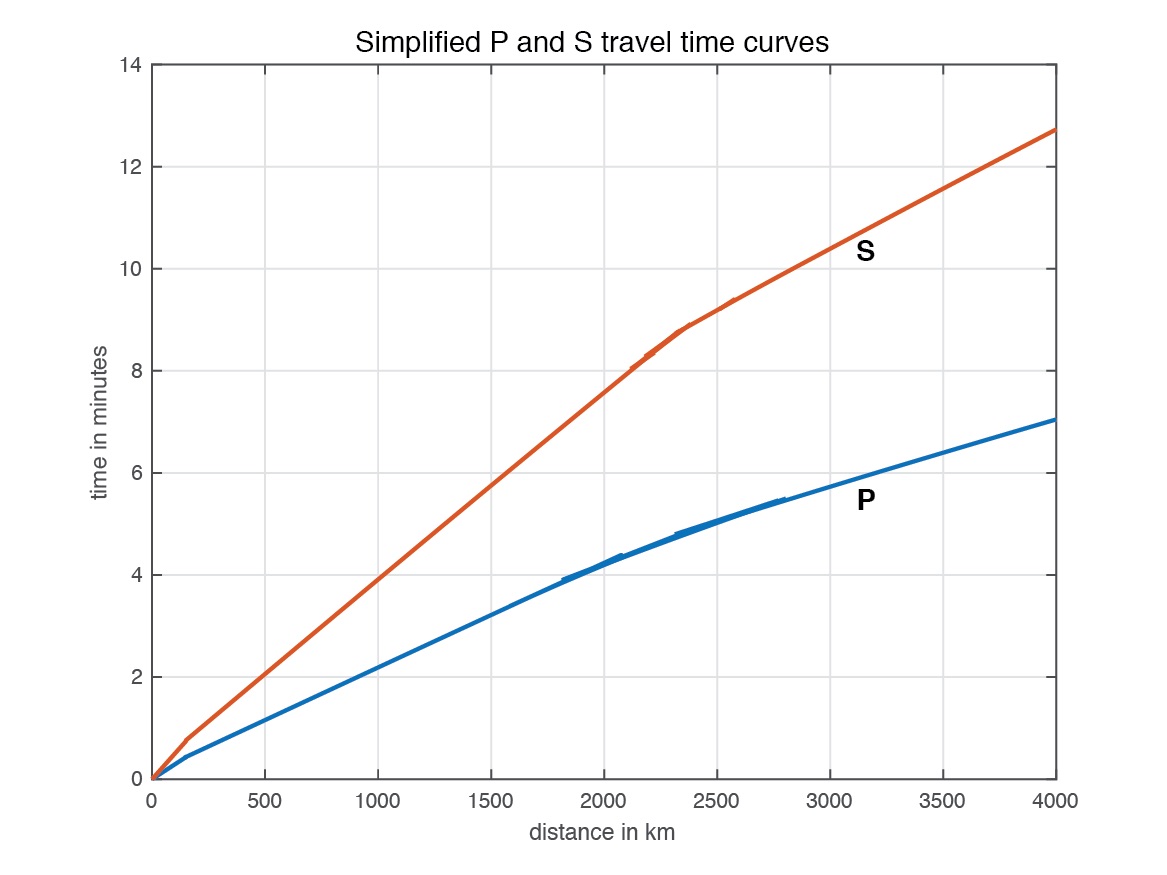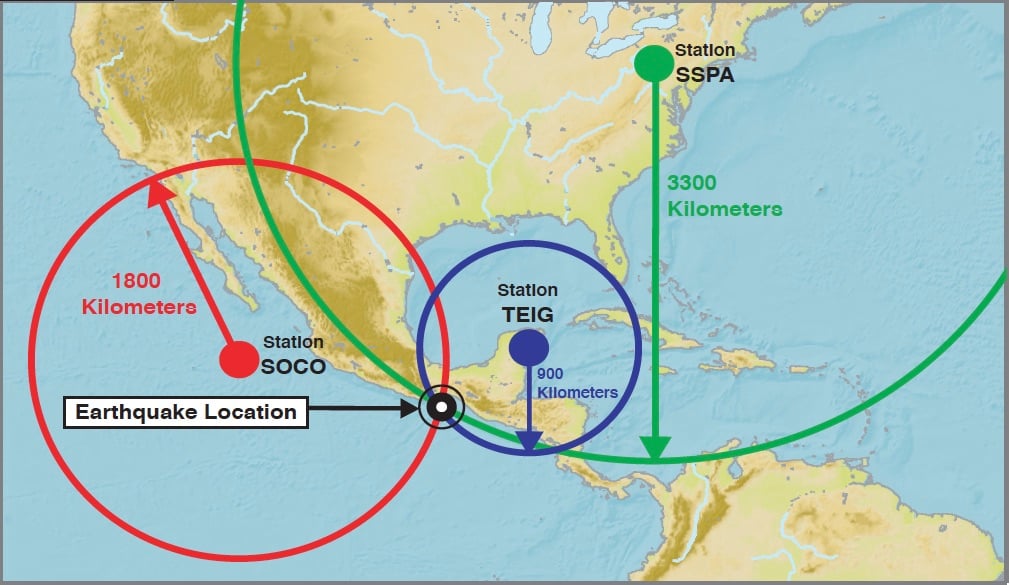Interpret the Travel-time Curve Shown. How Far Away Is the Earthquake Epicenter
Multiple Seismic Stations
To figure out just where that earthquake happened, y'all need recordings from seismic stations in other places. While earthquake locations are commonly washed with a calculator that can apace determine the paths of seismic waves through the Earth to many seismic stations, you tin become a practiced estimate of an earthquake location using a map, a ruler, a pencil, and a compass for drawing circles on the map.
Hither are examples of a seismograms from different places in Northward America that recorded the same convulsion. Distances from the stations to the earthquake are estimated from the difference between P and S wave arrival times:

Finding the Distance to the Epicenter

- Measure the distance between the first P wave and the outset Southward wave. In this case, the outset P and S waves are 24 seconds apart.
- Notice the point for 24 seconds on the left side of the nautical chart of simplified South and P travel time curves and mark that point. According to the chart, this convulsion's epicenter was 215 kilometers abroad.
- Measure the amplitude of the strongest moving ridge. The amplitude is the height (on paper) of the strongest wave. On this seismogram, the amplitude is 23 millimeters. Find 23 millimeters on the correct side of the chart and marking that bespeak.
- Place a ruler (or straight edge) on the chart betwixt the points you lot marked for the distance to the epicenter and the aamplitude. The point where your ruler crosses the center line on the nautical chart marks the magnitude (strength) of the earthquake. This earthquake had a magnitude of five.0.
Finding the Epicenter
You have just figured out how far your seismograph is from the epicenter and how strong the earthquake was, but yous still don't know exactly where the earthquake occurred. This is where the compass, the map, and the other seismograph records come up in.

- Check the scale on your map. Information technology should wait something similar a piece of a ruler. All maps are different. On your map, 1 centimeter could be equal to 100 kilometers or something like that.
- Figure out how long the distance to the epicenter (in centimeters) is on your map. For case, say your map has a scale where ane centimeter is equal to 100 kilometers. If the epicenter of the earthquake is 215 kilometers away, that equals 2.15 centimeters on the map.
- Using your compass, describe a circle with a radius equal to the number you lot came upwardly with in Pace #ii (the radius is the altitude from the heart of a circle to its border). The center of the circle will be the location of your seismograph. The epicenter of the earthquake is somewhere on the edge of that circumvolve.
- Practise the same matter for the distance to the epicenter that the other seismograms recorded (with the location of those seismographs at the center of their circles). All of the circles should overlap. The bespeak where all of the circles overlap is the approximate epicenter of the convulsion.
How Do We Measure out Earthquake Magnitude?
0 Response to "Interpret the Travel-time Curve Shown. How Far Away Is the Earthquake Epicenter"
Post a Comment